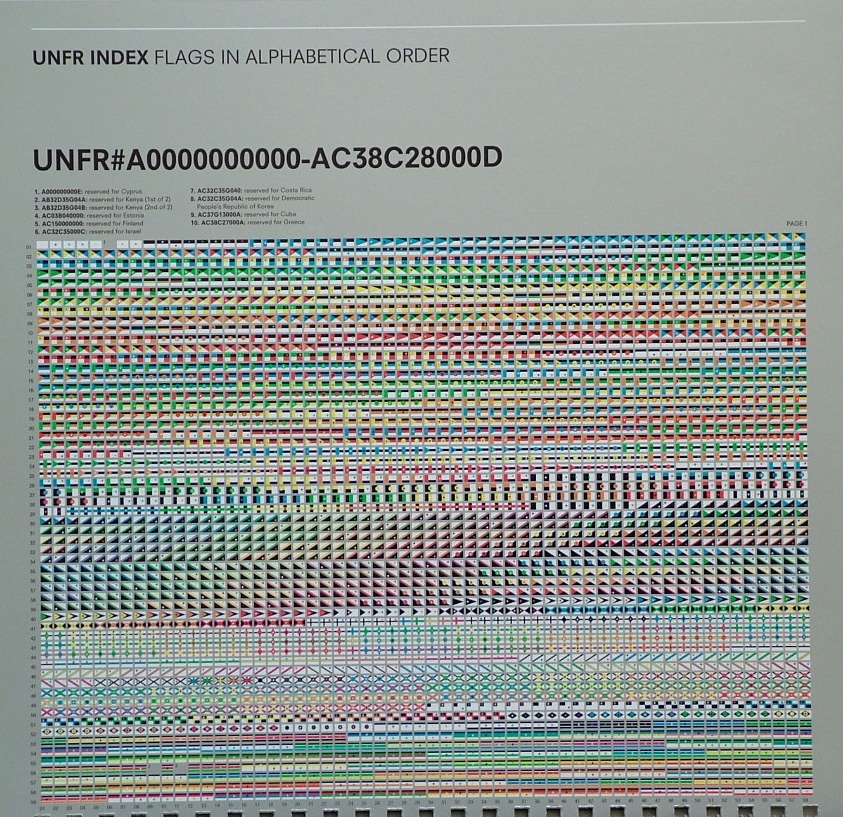GRADATIONs / Daihei Shibata

“When we gradate the boundaries between two polarized things, the two become smoothly connected. By blurring the various boundaries, we can find complexity, diversity, and richness of information.”

“When we gradate the boundaries between two polarized things, the two become smoothly connected. By blurring the various boundaries, we can find complexity, diversity, and richness of information.”
Create public websites to share simple posts by claiming a URL, no password, no login. Pages are deleted after 30 days of inactivity. Super simple and ingenius.
(From 76 Reasonable Questions to ask about any technology by Jacques Ellul)
“Shipping/returns as a cultural and physical contemporary phenomena. referencing richard artschwager’s ‘crates’, these careful crates serve as material resistance to a standardized bounding box economy that organizes, binds, shelters and delimits contents in anticipation of global circulation.”
Boxed In: The Aesthetics of Material Circulation
www.e-flux.com/
Exhibition and research on joints in design and art.
“… screws, hinges, nuts, nails, brackets and other hardware extending their original function and character. Like nails that reduce the risk of hitting your finger, two way tie wraps, fancy hinges and screws that smile at you. They give flavour to simple DIY work, review existing furniture and may inspire the carpenter.”
“‘Open Data Cam’ is a tool that helps to quantify the world. With computer vision ‘Open Data Cam’ understands and quantifies what it sees. The simple DIY setup allows everybody to become an urban data miner.”
The Amazon Echo as an anatomical map of human labor, data and planetary resources.
Global addressing system based on a 3×3 m grid of the world, where each cell is identified by a unique three word combination. Thought to replace numeric geo locations that are hard to remember and prone to errors in transmission. Covering the globe in a multi-lingual layer of random functional poetry.
“The installation self-generates images using two flatbed scanners laying on their side, with scanning surfaces pointing at one another. A computer script creates automatic mouse movements, randomizing the settings of the proprietary scanning software interface, and beginning a scanning process.
Each newly created image is then analyzed by a series of deep-learning algorithms trained on a database of contemporary artworks in economic and institutional circulation. When an image matches an existing artwork beyond an 83% match, it uploads it to this website and a twitter account.”
“The Screenless Office is a system for working with media and networks without using a pixel-based display. It is an artistic operating system.”
http://calc.dcfvg.com
More projects http://dcfvg.com
“Schema.org is a collaborative, community activity with a mission to create, maintain, and promote schemas for structured data on the Internet, on web pages, in email messages, and beyond.”
“If completed, it would contain every possible combination of 1,312,000 characters, including lower case letters, space, comma, and period. Thus, it would contain every book that ever has been written, and every book that ever could be – including every play, every song, every scientific paper, every legal decision, every constitution, every piece of scripture, and so on. At present it contains all possible pages of 3200 characters, about 104677 books.”
Also, the principle applied to image data:
https://babelia.libraryofbabel.info
Web framework to link contents from different online services together.
“The objective of allRGB is simple: To create images with one pixel for every RGB color (16777216); not one color missing, and not one color twice.”
Wireless sensor stickers for context aware applications. Considering the fundamental messiness of infrastructures and the procedural simplicity of the functional programming I imagine some interesting side effects if these things move around unintentionally, become trash and create a messy hyper-context, where you loose sight of what reacts to what. Maybe a question of context-aware ubiquitous applications in general.
…is comprised of over 2,000 voice recordings collected via Amazon’s Mechanical Turk web service.
Questions digital tools in the design process, relationship human and machine, freedom and limitations. She designes systems with defined limits and rules to create space for unexpected things (Conditional Design Collective).
Other topics: creation of own digital tools, co-design with algorithms, man-machine-friction/-adaption, productive glitch and space for imperfection in digital technologies.
http://poly-luna.com (see interview e.g.)
A trading algorithm based on superstition (moon phases, numerology). An objectively subjective apparatus.
“…explores the possibility of a modular construction model where everyone designs for everyone on the basis of one shared geometrical grid.”
The need of a rigidly defined, universal, modular order for enabling collaborative and open source development.
Research project about the possible role of networked images in the sciences. A system to assamble, categorise, annotate and link images wants to explore new forms of working with images in other scientific contexts than in art history. Some examples on the website.
“A matrix of nearly 80 adapter bricks that enable complete interoperability between ten popular children’s construction toys. By allowing any piece to join to any other, the Kit encourages totally new forms of intercourse between otherwise closed systems—enabling radically hybrid constructive play, the creation of previously impossible designs.”

(https://tonypritchard.wordpress.com/2009/12/13/shape/)
Systematization of the design of national flags generates a multiplicity of speculative national identities.
https://www.stedelijk.nl/en/collectie/maker/151739-arjan-groot